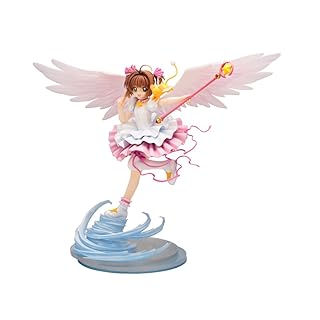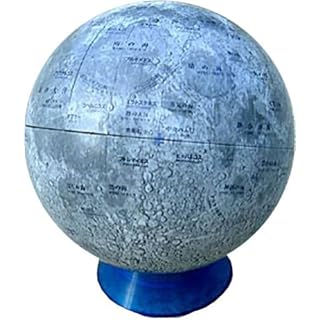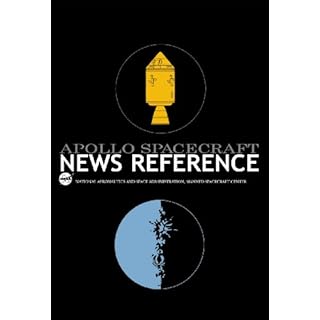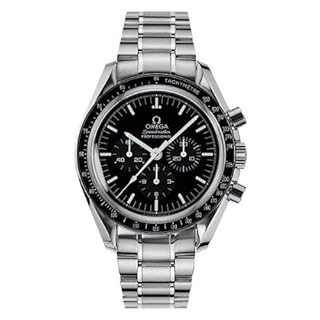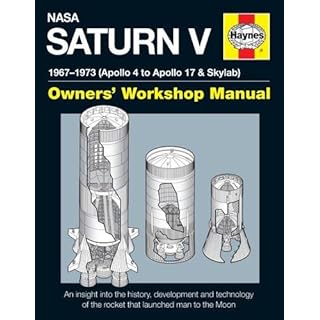Kennedy Space Center Visitor Complex(KSCVC)
- Location : Space Commerce Way, Merritt Island, FL 32953
- Opening : KSCVC 09:00-19:00 / U.S. Astronaut Hall of Fame 12:00-19:00
(close time varies depending on the season) - Closing : December 25 (May be closed on rocket launch day)
- Admission charges : Adult $45, Child (year 3-11) $35 (Price excluding tax)
- Web site : https://www.kennedyspacecenter.com/
- Online shop web site : https://www.thespaceshop.com/

Overview
Cape Canaveral near Orlando, with Walt Disney World and Universal Studios. Here is the Kennedy Space Center (KSC), which launched the Apollo and Space Shuttle. It is only manned spacecraft launch facility in the United States.
General tourists must approach from the Kennedy Space Center Visitor Complex (KSCVC), which is a dedicated tour facility.
Way to go
Orlando is wide, so it is best to travel by renting a car at the airport. The course is easy. There are only two corners from the airport to the KSCVC entrance. First, from Orlando International Airport, travel west on toll motorway 528 (Martin Andersen Beachline), and then turn left when you reach the end. Next, take 407 (Challenger Memorial Pkwy). At the end of the road, turn right and go straight on 405 (Columbia Blvd). You will see the sign of KSCVC on your right.

Travel agencies also offers guided optional tours depart from Disney World and Universal Studios hotels. However, because stay time at KSC is short, people who want to thoroughly enjoy it may be dissatisfied.
Entry
When you arrive there is the ticket office of the Kennedy Space Center. If you have not obtained a ticket, purchase one here. It is recommended that you purchase tickets online in advance from the KSCVC website. Print your ticket at home, then you can pass through the ticket office and go directly to the entrance of the Kennedy Space Center. At the entrance, hold the ticket barcode over the leader and enter. There is a simple metal detector and possession inspection. Metals, such as belts, watches, and hair ornaments, should be removed from your body.
How to explore
The attractions of the visitor complex are all free (included in your entrance fee), except for the special bus tour. From where you like, you can look around as much as you like. We recommend that you arrive 10 minutes before the opening time (9 am) and visit in order from the popular attractions. There are two popular attractions of KSCVC. One is the Shuttle Launch Experience. The other is free bus tour around the facilities of the Kennedy Space Center. It takes 20 to 30 minutes to enjoy the Shuttle Launch Experience if it is not crowded. Bus tours take around 1-2 hours all around the facility. We also recommend 3D movies in the IMAX theater.
Shuttle Launch Experience

This is a simulation ride type attraction where you can experience the launch of Space Shuttle.
First, store your luggage in the free locker (a deposit of 25 cents is required) and head to the waiting room.
From the waiting room, passing through the aisle that mimics NASA's office, you will find the theater first.
Here is a detailed description of the simulations you will experience.
Movement of the shuttle at launch and each event that occurs during climb,
If you understand all of these, you can enjoy this simulation more.
The person who appears and explains in the video here is Mr. Charles Bolden, who took four shuttle flight missions and became NASA Administrator in 2009.
And finally, boarding a ride.
Countdown, and launch, intense vibrations of the booster, then switch to smooth flight with main engine.
When the main engine is cut off, enter the world of weightlessness.
Finally, when payload bay door opens, you can see the beautiful Earth.
After you get out of ride, go through the aisle lined with plates introducing all 135 missions of Space Shuttle, you will reach the exit through souvenir shop.
If you want to shop for souvenirs, be careful not to deposit your wallet with a locker first.
The simulation boarding time is only about 9 minutes, but it will take 20 to 30 minutes in total even when it is not crowded, as waiting rooms, theaters and waiting before boarding will each have the same 9 minutes waiting time.
When you arrive at KSCVC, it is efficient to join this attraction first and then take the following free bus tour.
The
Space Shuttle Atlantis exhibit facility(KSC)
has been added to this attraction now.
It was opened on July 29, 2013.
Free bus tour

The free bus tour platform is located right hand after KSCVC's information center.
As of 2012, there are two bus stops for the tour : "LC39 Observation Gantry" and "Apollo / Saturn V Center".
You can move between these bus stops in just about 10 minutes, and buses run approximately every 15 minutes, so you can look around as much as you like.
The first bus leaves platform at 10:00. And the last bus is 14:45.
In addition, bus will pass just to the left of
VAB: Vehicle Assembly Building
on the way to LC39 Observation Gantry.
A crawler,
Mobile Launcher,
etc. are also parked near here.
You can take a closer look at these when you sit right of the bus.
LC39 Observation Gantry

This is a viewing platform located approximately 2km (1.2 mi) closer to LC39A launch pad.
However, we recommended to carry binoculars as the launch pad still looks far.
From this three-story observation deck, you can overlook LC39A / B launch pad, SLC41 launch pad that launches Atlas V rockets, and full view of Merritt Island.
Also, at the center of observation deck,
Space Shuttle's main engine
used in 15 launches, including Challenger's maiden flight, is exhibited and can be seen closely.
Next to this observation deck, there is an exhibition building that explains about launch pad,
and you can enjoy detailed explanations such as
model showing structure of the VAB
, Shuttle's solid fuel,
sample of Shuttle insulation tile
, and
launch pad and space shuttle related facilities
with miniatures, photo panels and videos.
Apollo/Saturn V Center

This is facility where actual Apollo Saturn V vehicle are exhibited.
When you enter it, a short film showing the history of Apollo will be shown, and the stage simulating control center will reproduce the moment of Apollo 8 launch.
Shock of launch vibrates control room's glasses and you can feel rocket's power.
And third room is the Apollo Saturn V exhibition room.
Rocket is beautifully kept and seems to be just completed.
You can take pictures freely.
And there are so many exhibits on display around tere.
Saturn V
The rockets displayed here are... Saturn V first stage (S-IC) is a repainted test module called S-IC-T with the paint of Apollo 11 (S-IC-6). second stage (S-II) and third stage (S-IVB) are stages made for Apollo 19 (S-II-14, S-IVB-514) that was canceled for launch. And Command module and Service module are mockups (Boilerplate BP-30).

CM&SM (Command module and Service module)
Just below the Saturn V, a pair of Unused Command module and Service module is on display. This is a CSM-119 prepared as a backup for Skylab and ASTP missions. It is only existing unused Apollo Command and Service module with flightable equipment. The development team of Orion, next manned spacecraft currently under development at NASA, has disassemble and research for reference. On the side of it, onboard space suit (Flight Suit) worn by James A. Lovell Jr. at Apollo 13 mission is on display.

LM (Lunar Module)
Lunar Module(LM-9) , which is displayed hanging from the ceiling here, is one of the four "real" existing machines. This was originally planned to be used for Apollo 15 mission, but due to cancellation after Apollo 18 mission, Apollo 15 mission has changed to J mission that uses Lunar Roving Vehicle(LRV). Therefore, this LM-9 which can not carry LRV remained unused.
Lunar Roving Vehicle (LRV)
Lunar Roving Vehicle (LRV) displayed here is a demonstration model created for KSCVC in 1971. The wheels are woven of wire, quite realistic compared to ones exhibited in other museums. A7L space suit worn by commander of Apollo 17 : Eugiene A. Cernan and Model of two-wheeled luggage carrier: Lunar Tool Cart used for moon exploration by Apollo 14 mission are displayed right next to it.
Astronaut Van
Just before launch, this Astronaut Van carried Apollo astronauts wearing a space suit approximately eight miles from Operations and Checkout (O&C) building to launch pad. The back door is open and you can look inside.
LUT (Launch Umbilical Tower)

Snoopy the Astronaut
A Snoopy statue dressed in spacesuit is on display at this Saturn V Center. The relationship between Snoopy and Apollo Project is deep, and used as a mascot or as a nickname for Apollo 10 Lunar Module. The Snoopy statue exhibited here is a donation from the family of Snoopy's original author, etc., in commemoration of NASA's 50th anniversary in 2008.

LUNAR THEATER
Here you can enjoy a 10 minute show that reproduces Apollo 11 moon landing. The first half is a video-focused show that reproduces tense scene just before moon landing on Apollo 11, where communication problems and program errors occurred. In the second half, a huge (actual size?) Model of LM joins, and moon landing will be reproduced on the stage. And the story expands from subsequent Apollo program to International Space Station and future space exploration.
Apollo 14 Command Module
At the exit of LUNA THEATER, there is an exhibition room where many artifacts related to Apollo project are displayed. Moon rocks, space suit worn by Alan B. Shepard, Jr. : commander of Apollo 14, television camera, flight plan and so on. And the highlight of these is real Command Module.

Moon rock
Near LUNAR THEATER, there is the moon rock that can be touched , which is a regular at NASA museums. It is very small compared to other exhibits, so don't overlook it.
Ranger Probe & Lunar orbiter spacecraft
The first stage of Saturn V : S-IC's upper ceiling holds models of Ranger Probe & Lunar orbiter spacecraft , which was active early in the US lunar exploration.
Crawler's track
Yellow painted tracks of Crawler transporter are on display. One piece weighs about 1 ton.
LM Cockpit
On the wall of Saturn V Center, Lunar Module cockpit used for flight training is embedded.
IMAX theater
It is a theater where you can enjoy IMAX movies with huge screens and huge films.
There are two theaters here, and two movies are regularly screened.
You can check the screening title on the
KSCVC Web site.
The screening time is about 40 minutes each.
You can check start time at event timetable available at information center, or at IMAX theater entrance.
Of course the charge is free (included in admission fee).
In this building, there are EYE ON THE UNIVERSE: THE HUBBLE SPACE TELESCOPE : introduce Hubble Space Telescope and its results, and NASA ART GALLERY display paintings by artists on the subject of space exploration.
It may be good to kill the time to screening start.
Early Space Exploration

(This facility was integrated with annex “United States Astronaut Hall of Fame” in November 2016 and has been renewed as “Heroes & Legends”.)
It is a museum on the edge of KSCVC, next to Rocket Garden.
It's a little far from entrance, so there are few visitors, but are some impressive exhibits.
Here you can see history of early space exploration from Robert Goddard's liquid fuel rocket, America's first manned space flight : Mercury program, to Apollo, along with the related items.
When you enter,
Soviet Union Soyuz spacecraft
will greet you overhead first.
And the highlight is
reproduction of flight control room of Mercury project
which relocated the actual equipment.
You can see old-fashioned equipment lined up here.
And behind that, there are
the actual backup capsule of Mercury 8 : Sigma7
,
the actual capsule of Gemini 9A
, and
A7L space suit worn by Commander Neil A. Armstrong
and so on.
The Rocket Garden

It is an open space that displays various rockets related to NASA's manned space exploration. The largest one displayed sideways, is Saturn IB rocket used in the Apollo 7 and SkyLab project. In the immediate vicinity is SwingArm No.9 : White room mounted on top of the LUT and connected directly to Apollo Command module hatch.

Exploration Space
It is an exhibition where you can learn about many space exploration programs currently being worked by NASA. You can know present and future of NASA. Also, in a live theater show, which takes place every 30 minutes, you can hear about NASA's program directly from NASA staffs. These are familiar contents for those who are watching NASA TV on the iPhone podcast.
Astronaut Encounter
It is an attraction where you can talk directly with NASA astronauts. Every day, NASA astronauts appear at the venue to answer visitor's questions. You can find out when and who to meet on the KSCVC Web site. Event duration is 25 minutes approx. and will held twice a day.
Robot Scouts
A robot attraction that explains history of space exploration for kids.
The Space Shop(Souvenir shop)

KSCVC has three big souvenir shops, the largest of which is
The Space Shop
.
In the huge two-storey shop, ground floor displays souvenirs such as T-shirts, postcards and key rings,
and the second floor is full of collectors items such as books, videos, mission patches and scale models.
There are also shops in Apollo / Saturn V Center and Shuttle Launch Experience.
The variety of items is almost the same everywhere, but some shops may have sold out the size and design of T-shirt and so on, so get it as soon as you find the one you want.
There are also two Kennedy Space Center shops on the third floor of Orlando International Airport. Let's not overlook this too.
It may be better to plan what kind of souvenirs to buy in advance.
Recommendation is T-shirts first.
There are many designs, from for NASA mania to casual wearer.
And space food.
Freeze-dry ice cream that can be stored at normal temperature is a standard product.
Also, Fisher's
Space Pen
is a staple item.
It is filled with gas, and you can write letters even in weightlessness or facing the ceiling.
There are many designs for posters, postcards and key rings.
The KSC Official Souvenir Book, which can only be purchased here, costs $ 7.99. Not only English version but also national language version is available.
In addition, if you want to buy specialty books, it seems that
Amazon.com
is often cheaper.
Check it before purchase.
Astronaut Memorial

This is The monument engraved with the name of astronauts who died in the line of duty shaped like a huge stone monument. It was installed by President George Bush in 1991. The names of the astronauts who lost their lives during various missions and trainings are engraved, including the Apollo 1, Shuttle Columbia and Challenger crew members. Also displayed here is the model of T-38 training jet , which NASA astronauts use to move between JSC and KSC.
Guided paid bus tours
KSCVC also offers special paid bus tours with a guide. Can enter KSC facilities that you can not visit individually and listen to explanations. The ticket price is USD 70.00 for adults and USD 54.00 for children (3-11 years old) including KSC entrance fee. You can book online and buy tickets.The permanent tour is Cape Canaveral: Then & Now, visiting launch facility of Mercury Project and Air Force Space and Missile Museum by KSCVC. It takes place once a day and the tour starts at 12:50. Participants must carry an identification card (passport).
Limited paid bus tour
And for several years from 2011, a special tour was held to tour each facility that is not normally seen, using the space shuttle's end of operation and the start of operation of the next manned spacecraft: Orion / SLS. The first is the KSC Up-Close: The Vehicle Assembly Building Tour , where you can tour the inside of VAB : Vehicle Assembly Building(NASA). The second is the KSC Up-Close: The Launch Control Center Tour , where you can tour the inside of LCC : Launch Control Center(NASA) Firing Room 4 that controlled the launch of Apollo and Shuttle. The third one is the KSC Up-Close: The Launch Pad Tour , which gets inside the security fence of the 39A launch pad and approaches about 300 m from the LC-39A launch pad(NASA).
Furthermore, since 2013, the “Mega Tour” has also been conducted to tour the VAB and the LC-39A launch pad at once.
If you are a deeper space mania, you should not miss this opportunity. However, it is difficult to participate in multiple tours in one day because each tour has a limited start time and it takes nearly two hours to finish. In addition, tickets can only be purchased in combination with admission for any tour on the web. You need to visit Kennedy Space Center for three days to take part in these three special tours. Of course I took all these tours by 3 days visit.
Limited tour 1 : KSC Up-Close: The Vehicle Assembly Building Tour

When bus leaves, it will first head to the area where KSC headquarters building is located. Observe KSC headquarters building, Operations and Checkout (O&C) building where Astronauts eat before launch, wear space suits, and board the Astro Van, SSPF:Space Station Processing Facility from bus window.
Then follow the path to NASA Park Way East to Cape Canaveral Air Force Station, On the way, get off the bus at the launch observation site in the center of Banana River embankment.

Then the bus goes back on the way, at last we head to the VAB. Stop by the door on north side of VAB, Walk into High Bay 3 . In High Bay, various space exploration related devices are exhibited. Contents of the exhibition will change depending on the day of the tour. When I visited, the Next generation manned spacecraft Orion / SLS LES (escape rocket) was exhibited. And the highlight of exhibits was authentic OV-104 Space Shuttle Atlantis and Astro Van. It was on display as it returned from the very last shuttle mission. In addition, while explaining VAB and shuttle, the presenter also let us touch the actual Shuttle insulation tile. It was in a plastic bag, but can realize lightness of the tile.

Space Shuttle Atlantis is now sit at the Atlantis Exhibition Facility , which opened on July 29, 2013.
After tour of VAB, we eturn to bus and continue to launch pad LC-39A. Turn right in front of the fence surround the restricted area of launch pad, follow Saturn Causeway to the end and turn left on Cape Rd. You will then arrive at An observatory overlooking both LC-39A and 39B facing the beach. Here, you will be able to get off the bus again for memorial photo shoot. If the weather is fine, you can enjoy not only the launch pad view but also the beautiful beach views. Finally, approach the LC-39B launch pad , look at the launch pad to the right hand from inside the bus, and return to Apollo / Saturn V Center.
The highlight of this tour is concentrated on the right window of the bus, with the exception of LC-39A. When taking part in this tour, sit in the right chair.
Limited tour 2 : KSC Up-Close: The Launch Control Center Tour

When the bus leaves, go from Kennedy Pkwy to Saturn Causeway and straight to LCC on the side of VAB. The fence surround LCC will be opened and bus enter the restricted area. Bus will stop in front of LCC Building and the tour will begin. Because Firing Room is small, we divided into two groups before the tour and visited alternately.

Take the elevator from hall and get off at 3rd floor, right in front of the entrance to Firing Room 3 and 4. After briefly receiving a description of Firing Room, finally enter Firing Room 4. We received explanations about role of each staff here and launch sequence, while being surrounded by row of control consoles. Then continue into the Bubble room on either side of the Firing Room. From here you can overlook entire Firing Room and, in retrospect, LC-39A / B launch pad. Here you can look the files of Shuttle launch procedure. Finally, in the Launch Director's seat at the top of the center, take a memorial photo and the tour of Firing Room is over. In addition, Firing Room 3 under refurbishment next door was seen from the window.

Next, wait for another group to finish tour of Firing Room in the hall of LCC. The hall displays a large mural depicting NASA's history of space exploration, Part of the control console used in the Apollo era and the early shuttle era , and Mission patch for all space rockets controlled by LCC for launch. Every patch has a plate showing launch and return dates, but SkyLab, STS-51L (challenge accident) and STS-107 (Columbia accident), which never returned, did not have a return date plate.
When LCC tour is over, return to the bus and continue to launch pad LC-39A. See the launch pad from bus window. At the front of fence of launch pad, turn right and follow Saturn Causeway. Make a U-turn at the turning point just ahead and pass in front of LC-39A again, return to Apollo / Saturn V Center.
The highlight of this tour is concentrated on the right window of the bus, with the exception of LC-39A. When taking part in this tour, sit in the right chair.
Limited tour 3 : KSC Up-Close: The Launch Pad Tour

The bus leaves Saturn Causeway and goes straight to LC-39A Space Shuttle Launch Pad. Enter restricted area inside the fence surrounding LC-39A. In the restricted area, turn left around circling road surrounding launch pad. The launch pad is always visible to the left.

As approach this position, you can realize the hugeness of launch pad. And also you can look closely at the details. Return to bus and make a left turn around circular road in the restricted area. The staff explain water reservoir tank, liquid hydrogen and liquid oxygen tanks used as fuel, astronaut emergency escape systems, and other facilities, with slowly or stopping the bus. And finally, we exit restricted area of LC-39A through a facility that stores self-igniting fuel , which is said to be the most dangerous place around the launch pad.

Then take Saturn Causeway to the end and turn left on Cape Rd toward LC-39B. After watching it from inside the bus, head to VAB. Get off at the open space at Saturn Causeway and Utility Rd intersections south of VAB (the place where Saturn V was displayed outdoors until 1996). Take a look at the exterior of VAB. VAB from the exquisite angle looks beautiful like a postcard. Here you can also enjoy photography freely. Once VAB photo session is over, return to Apollo / Saturn V Center.
The highlight of this tour is concentrated on the left window of the bus, with the exception of LC-39A. When taking part in this tour, sit in the left chair.
United States Astronaut Hall of Fame

Many of the exhibits are related to Mercury Project. When you enter, a statue of Alan B. Shepard, Jr. will greet you.

And the main exhibit(?) is the Hall of Fame , which honors many famous astronauts. The portrait of each astronauts are displayed along with patches of participated missions. The second half of the museum exhibits are filled with physical games and simulators that kids can enjoy.
Florida's summer is cold !?
The climate in Orlando, Florida, where the Kennedy Space Center is located, is almost the same as Tokyo in Japan. The temperature is around 79 degrees in the morning and evening and nearly 95 degrees in the daytime. However, facilities at Kennedy Space Center and tour bus are strongly cooled, and you never feel hot. Rather, when it's cloudy, cooling is so effective that you'll feel even colder. When visiting Kennedy Space Center, it is recommended that you carry a jacket even in summer.Recommended accommodation area


The hotel I stayed is The Inn at Cocoa Beach. Beach is just behind the hotel, and you can enjoy a wonderful sunrise in the morning. In addition, the main shop of RON JON SURF SHOP : famous surfing & beach goods and souvenir shops, and huge supermarket, pharmacy, McDonald's and Seven Eleven are within walking distance. Coffee is available 24 hours a day for free in the hotel lobby, and in the evening from 17:00 to 18:00 you can enjoy cold white wine and cheese for free. A delicious breakfast of omelette and orange juice is also included. A cozy motel with a homely atmosphere and friendly staff. It is a super recommended hotel.
Kennedy Space Center Related Apps
-
Kennedy Space Center Guide

Kennedy Space Center Travel Free
The Kennedy Space Center Visitor Complex app is the essential guide to planning and customizing your visit to create a great space adventure! Kennedy Space Center Visitor Complex is your gateway to an active spaceport where a visit gets you closer to NASA than anywhere else on Earth.
view details(App Store)
Kennedy Space Center VR (Virtual Reality) 3D Glasses App
In January 2017, the Kennedy Space Center Visitor Complex's souvenir shop and it's online shop released 3D glasses (Space Visor) for $ 59.99, which experience the Kennedy Space Center, the International Space Station (ISS), and a planetary probes. If you set a smartphone with the free app installed and look at it, a virtual reality image will appear in front of you, giving you a 360 degree view. In addition, 3D glasses to be used with it are OK with commercial products compatible with Google Cardboard.-
Edge of Home

Kennedy Space Center Education Free
This virtual reality experience (VR) will allow you to explore the International Space Station (ISS) like only astronauts have. See what it is like to take a spacewalk with a NASA astronaut guide. Learn about each part of the ISS, and the part they will play in the future of space exploration.
view details(App Store) -
KSC 360 Expedition

Kennedy Space Center Education Free
Explore the NASA Kennedy Space Center Visitors Center (KSCVC) Like you never have before in this virtual reality (VR) experience. See what it is like to be inside the vehicles NASA astronauts took to space. Expand your story at the KSCVC.
view details(App Store) -
Space Dreams

Kennedy Space Center Education Free
This virtual reality (VR) experience allows you to discover space like you never have before, and to expand your Kennedy Space Center (KSC) experience. Venture into our solar system to explore the different planets, and see the tools that NASA has used and will use to explore past the bounds of our planet.
view details(App Store)
Kennedy Space Center Related Books
-
NASA Kennedy Space Center (Images of Modern America)

Arcadia Pub 2016-02-15 USD22.99
From Bumper V-2 rocket launches in 1950 to the launch of the Orion spacecraft atop a Delta IV rocket in 2014, NASA's Kennedy Space Center has served as the nation's portal to outer space for over 60 years.
-
Kennedy Space Center: Gateway to Space

Firefly Books Ltd USD19.59
NASA's John F. Kennedy Space Center set the stage for the American adventure into space and went on to host a succession of rocket launches that have helped to form our understanding of the nature of the universe. The Kennedy Space Center is a major tourist attraction in Florida, but most of its doors remain locked to the public. This abundantly illustrated book is an insider's history of the heart of America's space program
-
A History of the Kennedy Space Center

Univ Pr of Florida 2007-06-13 USD35.86
Celebrating the fiftieth anniversary of NASA in 2008, a comprehensive history of the Kennedy Space Center offers a revealing glimpse of behind-the-scenes operations and the technology and techniques of preparing, testing, and launching spacecraft, documenting the various space missions and programs that have taken place.
-
Cape Canaveral: America's Spaceport

Schiffer Pub Ltd USD29.99
Read the compelling story behind America's half-century space exploration. Through 318 images, see how the space program transformed Cape Canaveral from a traditional citrus production and tourist area into the world's most influential high-tech space center in the nation. From its first launch of a two-stage rocket in 1950 to the latest Space Shuttle missions in 2010, Cape Canaveral has made more successful launches into orbit than any other site in the world. A great souvenir for both visitors and residents, this book is also a wonderful resource for space historians worldwide.
-
Go for Launch: An Illustrated History of Cape Canaveral

Collectors Guide Pub USD22.50
From the first Bumper V-2 launch in 1950 to the Atlas V vehicles of today, more than 55 years of Cape Canaveral history is captured in this exhaustive photographic exploration. Honoring the development and evolution of one of space travel's most famous and significant facilities, this collection features detailed maps and historical aerial visuals, revealing the famous launch complexes and basic infrastructure of this storied base station.
-
Gateway to the Moon: Building the Kennedy Space Center Launch Complex

Univ Pr of Florida USD24.45
A comprehensive history of the Kennedy Space Center uses archival illustrations, aerial views, and extensive interviews with NASA personnel to tell the story. Reprint.
-
The Kennedy Space Center Story

Graphic House USD5.99
The Kennedy Space Center Story











